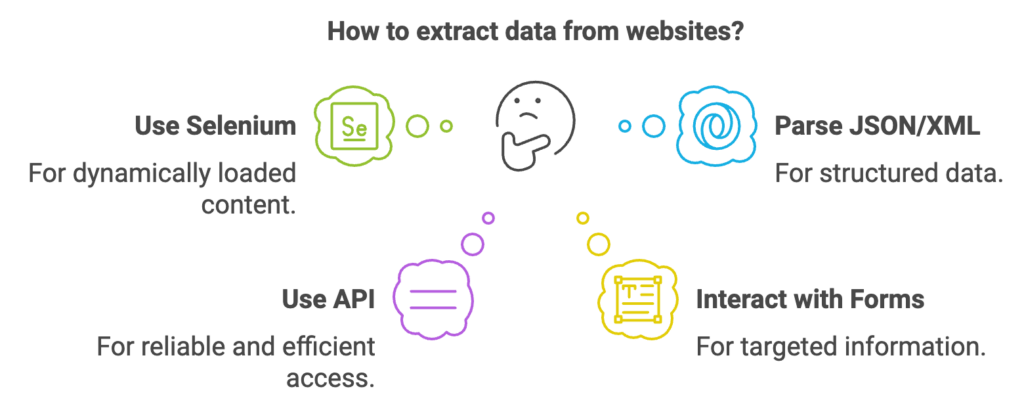Web scraping, the automated process of extracting data from websites, has become an essential tool for businesses and researchers alike. But not all websites are created equal, and understanding the underlying patterns of a website is crucial for effective scraping.
Pagination: A Web Scraper’s Best Friend
One of the most common and scrape-friendly patterns is pagination. Websites using pagination display data in multiple pages, each with a consistent structure and interface. This makes it easy for web scrapers to identify and extract the desired data. Imagine a product listing page with a “next” button to move to the following page. This consistent structure makes it simple to automate the process of navigating through pages and extracting relevant data.
Beyond Pagination: Recognizing Other Patterns
While pagination is a clear indicator of a website suited for scraping, there are other patterns to consider:

1. Dynamically Loaded Content: Websites might load content dynamically using JavaScript, meaning the data isn’t immediately present in the initial HTML source code. This presents a challenge for traditional scraping methods. However, tools like Selenium, which can interact with the browser’s JavaScript engine, can overcome this hurdle.
2. Structured Data (JSON/XML): Websites often embed structured data in formats like JSON or XML, offering a clean and organized way to access data. Scrapers can easily parse these formats to extract information efficiently.
3. API Access: Some websites offer Application Programming Interfaces (APIs), which provide a standardized way to access and retrieve data. This is often the most reliable and efficient approach, especially for large datasets. [review more How to find hidden API]
4. Forms and Filters: Websites with forms and filters offer the ability to refine search results and focus on specific data. Web scrapers can interact with these forms and filters to extract targeted information.
5. Data Tables: Tables are a common way to present data in a structured format. Scrapers can easily parse table elements, extracting data from rows and columns.
Web Scraping: A Powerful Tool, But Use Responsibly
While web scraping offers significant advantages, it’s important to use it ethically and responsibly. Respect website terms of service, avoid over-burdening servers, and consider the potential impact of your scraping activities.
Need Help with Web Scraping?
If you’re unfamiliar with the intricacies of web scraping, don’t worry! We offer professional web scraping services tailored to your specific needs. From simple pagination to complex data extraction, We can help you get the data you need, efficiently and responsibly.
Related Articles: